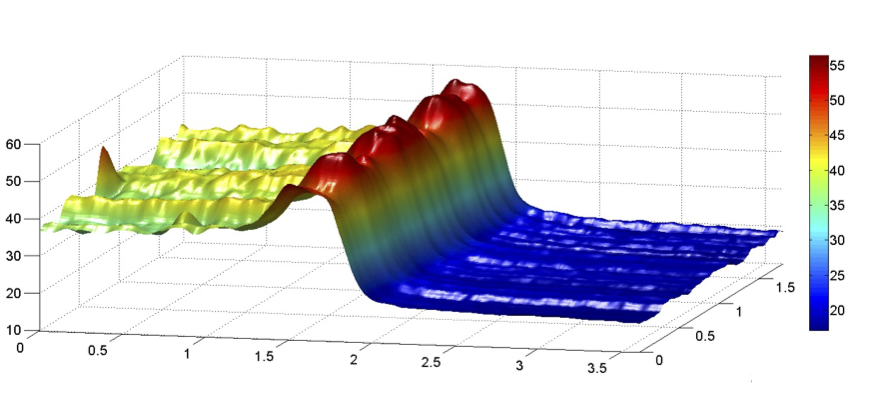Thin layer inspection
The classical reflection spectroscopic description of thin layers and layer stacks to determine the refractive index n,n, the absorption coefficient k and the layer thickness d is based on Fresnel's formulas and the determination of the dielectric function (e.g. CAUCHY model) using an optical model describing the sample. Often iterative methods must be used in the calculation to determine the parameters.
The basic prerequisites in Hyperspectral Vision are a defined beam path. For the (hard modeling) calculation, an almost vertical incidence is assumed and starting values from the literature or ellipsometry are used for the iteration.

SiO2 layer on silicon, left: Typical interference spectra (measured) and right: calculated layer thickness
Depending on the coating materials and thicknesses, all spectral ranges from UV to NIR are suitable for the investigations. The 'hard modeling' of the coating parameters can take several hours due to the necessary adaptation of each individual spectrum to the model. However, a calibrating 'soft modeling' approach is able to speed up the evaluation and perform the optical layer inspection in real time.
The optical non-contact inspection of sheet resistance with hyperspectral imaging is based on a similar approach. Using the DRUDE model, the specific electrical resistance or specific electrical conductivity can be determined with spatial resolution. Compared to conventional 4-point or eddy current measurements to determine the specific electrical resistance, defects and cracks in the layer can be made visible, but an absolute value cannot be specified due to the principle. The reason for this is that the optical models used at the defects and cracks do not match the real sample. In addition, mapping the calculation errors can provide further indications of inconsistencies and impurities in and on the sample. All transparent conductive layers are suitable for the investigations, as are thin metallic layers.

Spatial resolved sheet resistance on a partially flashed indium tin oxide layer, Hyperspectral Vision measurements showed similar results in comparison to eddy current, 4-point-measurements and ellipsometry
